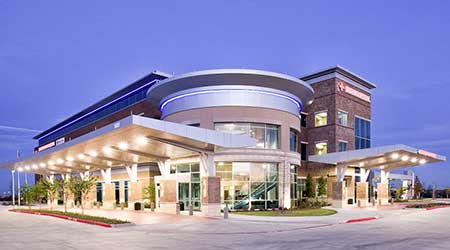 Microhospitals have a smaller footprint that makes them more efficient and convenient for patients, physicians, and nurses, with spaces designed to be flexible and adaptable.E4H Environments for Health Architecture
Microhospitals have a smaller footprint that makes them more efficient and convenient for patients, physicians, and nurses, with spaces designed to be flexible and adaptable.E4H Environments for Health ArchitectureMicrohospitals Offer New Ways To Expand Access To Care
The smaller footprint makes microhospitals more efficient and convenient for patients, physicians, and nurses.
Over the last two years, more than a dozen U.S. states have seen the arrival of a new breed of hospital — the “microhospital.” A microhospital is a facility that, just like a community hospital, runs 24 hours a day, 7 days a week. It is typically a 15,000- to 50,000-square-foot facility with between ten beds and fifty beds, depending on market demand.
Microhospitals offer several upsides for healthcare providers. Their smaller footprint makes these facilities more efficient and convenient for patients, physicians, and nurses, with spaces designed to be flexible and adaptable. Microhospitals can often have expedited design, development, and construction approval processes, and are typically built more rapidly than larger hospitals.
The community often benefits from the improved access to care thanks to this approach; that’s especially true for rural and exurban residents on the far edges of a large hospital service areas. Despite what the name may suggest, microhospitals offer full medical services typically found in large hospitals, including emergency care, pharmacy, lab results, imaging and even surgery.
Like so much else in the healthcare industry, the decision to develop a microhospital is often a strategic move. Most often, it represents an effort to stake their claim and reach an underserved population before their competitors. In some cases, health systems are designing new freestanding emergency departments and diagnostic and rehabilitation centers with the explicit flexibility for them to evolve into future microhospitals.
Physician groups are also gravitating to this facility type as a way to gain independence from the large hospital, providing the community with ease of access. Microhospitals also provide improved efficiencies. Community hospitals have become more streamlined in the urban setting, but those same processes that drive efficiency in an urban setting are not applicable to the rural setting. For several rural areas, microhospitals are a more appropriately sized facility to address population health.
Providing healthcare in a rural setting, in particular, is a unique challenge due to the remoteness of many locations. Microhospitals, freestanding emergency departments, and outpatient clinics are some of the facility types that are addressing this issue.
Related Topics:












